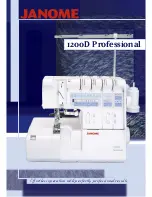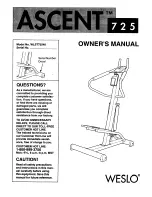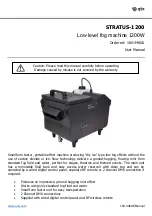
UX-4000MU
FO-2950MU/C
7-4. Functions and operations of major parts
1
2
3
10
4
5
6
7
8
9
11
1
Developing
5
Toner seal
9
Discharge
roller
brush
2
Doctor
6
Transfer roller
F
Main charger
brush
3
Toner stirring
7
Separation
G
Toner seal
plate
electrode
4
Toner supply
8
OPC drum
roller
Fig. 10
(1) OPC drum unit
The OPC drum is charged and latent electrostatic images are formed on
it and developed into visible toner images.
a. OPC drum
Latent electrostatic images are formed and developed into toner im-
ages on the OPC drum.
Organic Photo Conductor is used. The OPC surface is charged nega-
tively by the main charger brush.
When the OPC is exposed to laser beam, the electric resistance of the
exposed section falls and electric charge is generated in the OPC. As a
result, electric charge on the OPC surface is removed. This principle is
used to form latent electrostatic images.
c. Toner seal
The OPC drum unit is provided with two toner seals, which prevent leak-
age of toner remaining in the OPC drum unit.
(2) Developing unit
Latent electrostatic images formed by laser beam on the OPC drum are
developed to visible images by the developing unit. Toner is filled in the
developing unit.
a. Developing roller
The developing roller is made of urethane and has a high electric resist-
ance. It is flexible and is in close contact with the OPC drum. Toner on
the developing roller is attached to latent electrostatic images on the
OPC drum to form visible images on the OPC drum.
A voltage of DC-250V is applied the developing roller.
b. Doctor
The doctor is in close contact with the developing roller. It adjusts toner
quantity on the developer roller surface.
The doctor is made of conductive material.
c. Toner supply roller
Toner is supplied to the developing roller by the sponge roller which is
connected to the developing roller.
d. Toner stirring plate
This plate stirs toner in the developing unit to transport it to the develop-
ing roller smoothly.
e. Toner seal
The toner seal prevents toner from leaking outside the developing unit.
(3) Transfer charger roller
The transfer charger roller is made of urethane and has a high electric
resistance. It is flexible and is in close contact with the OPC drum.
A high voltage of AC 600V (P-P) and DC +3500V are applied to charge.
It positively charges paper transported from the paper feed section, which
transfers negatively charged toner on the OPC drum onto the paper.
(4) Separation electrode
This electrode is connected to the drum ground. It discharges paper
which was positively charged in the transfer section to reduce the po-
tential difference with the OPC drum to reduce static electricity between
the paper and the OPC drum, thus facilitating separation of paper.
(5) High voltage unit (in the Printer PWB)
A high voltage is generated by the invertor system, and is supplied to
the main charger unit, the transfer charger unit, and the developing roller.
OPC layer
CTL (Charge transfer layer)
Aluminum layer
CGL (Charge generation layer)
b. Main charger brush
The main charger brush charges the OPC drum surface. It is composed
of brush fibre, and is in the shape of a roller. A high voltage of AC 600V
(P-P) and DC-850V are applied to charge the brush.
The main charger brush is in contact with the OPC drum. BY applying
electric charge to the OPC drum, the OPC drum is charged to about
1kV.
Fig. 11
3 – 6
manuals4you.com
Summary of Contents for FO-2950M - B/W Laser - All-in-One
Page 106: ...UX 4000MU FO 2950MU C 6 10 Control PWB parts layout Top side manuals4you com manuals4you com ...
Page 107: ...UX 4000MU FO 2950MU C Control PWB parts layout Bottom side 6 11 ...
Page 109: ...UX 4000MU FO 2950MU C 6 13 TEL LIU and Hook SW PWB parts layout ...
Page 112: ...UX 4000MU FO 2950MU C 6 16 Printer PWB parts layout manuals4you com manuals4you com ...
Page 231: ...UX 4000MU FO 2950MU C M E M O ...
















































